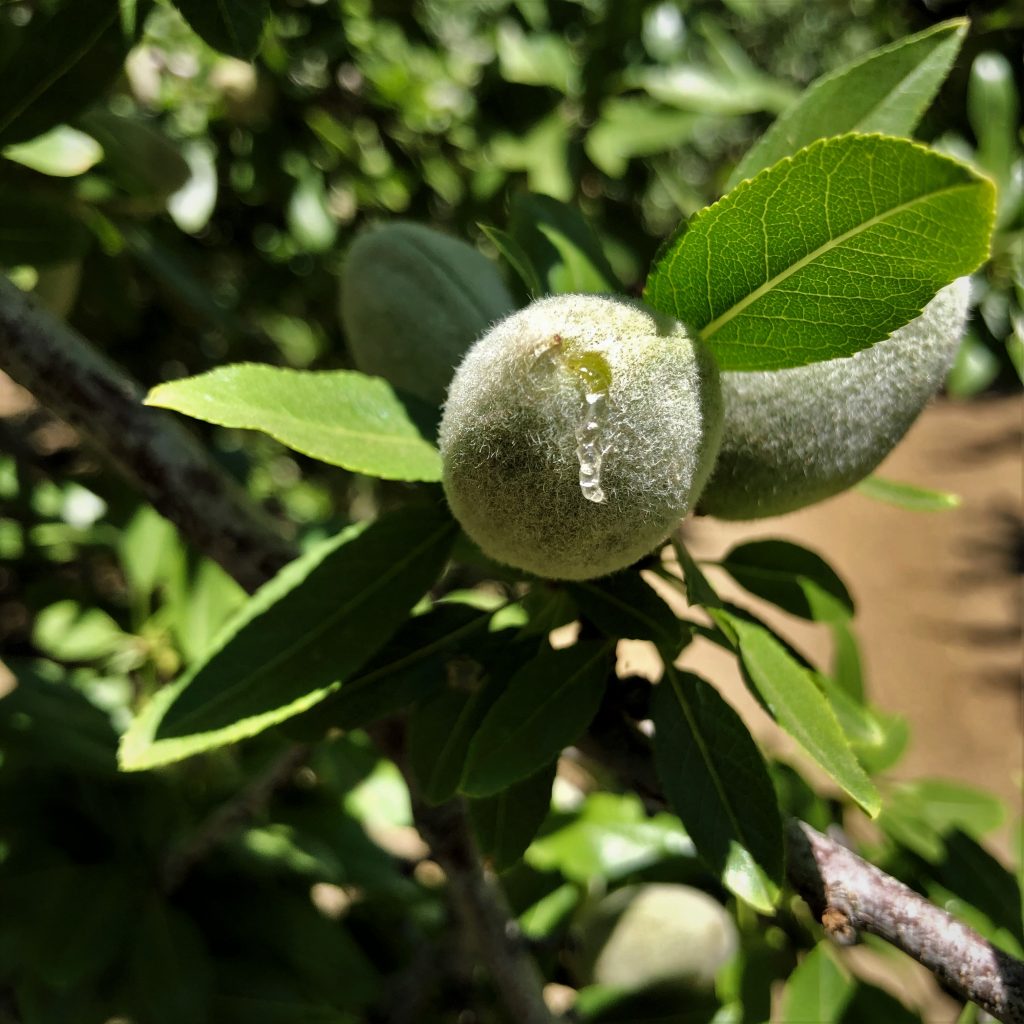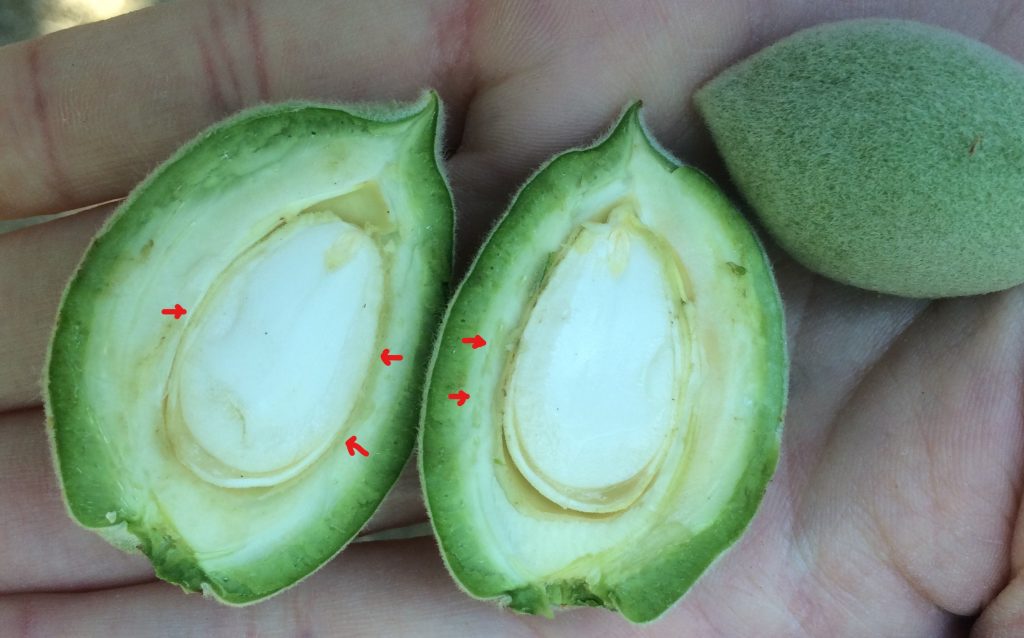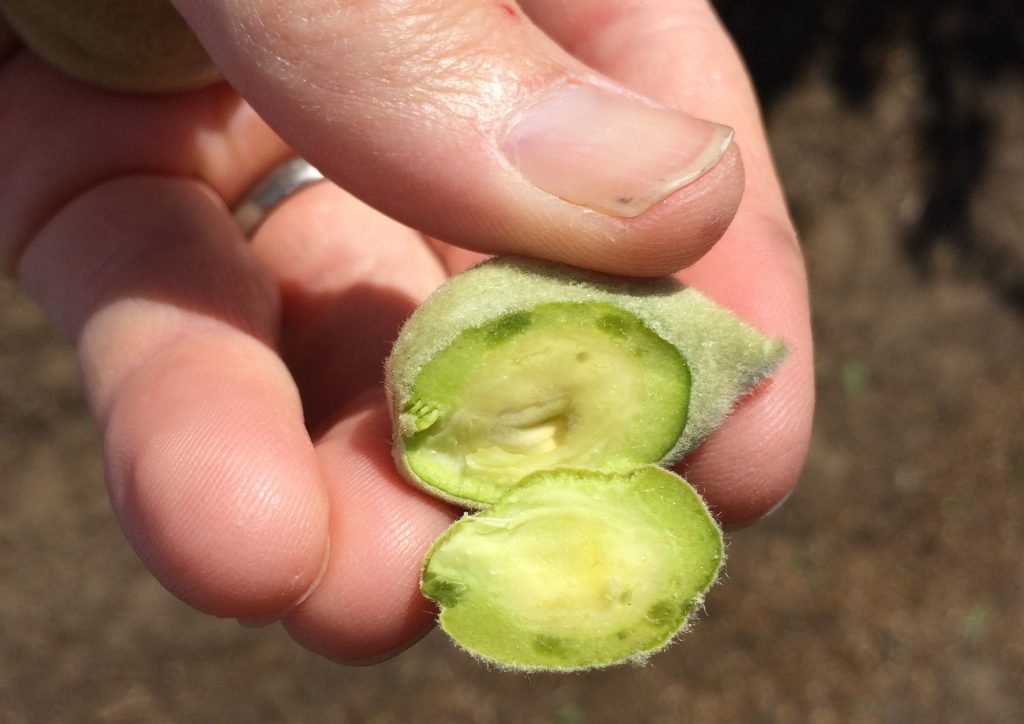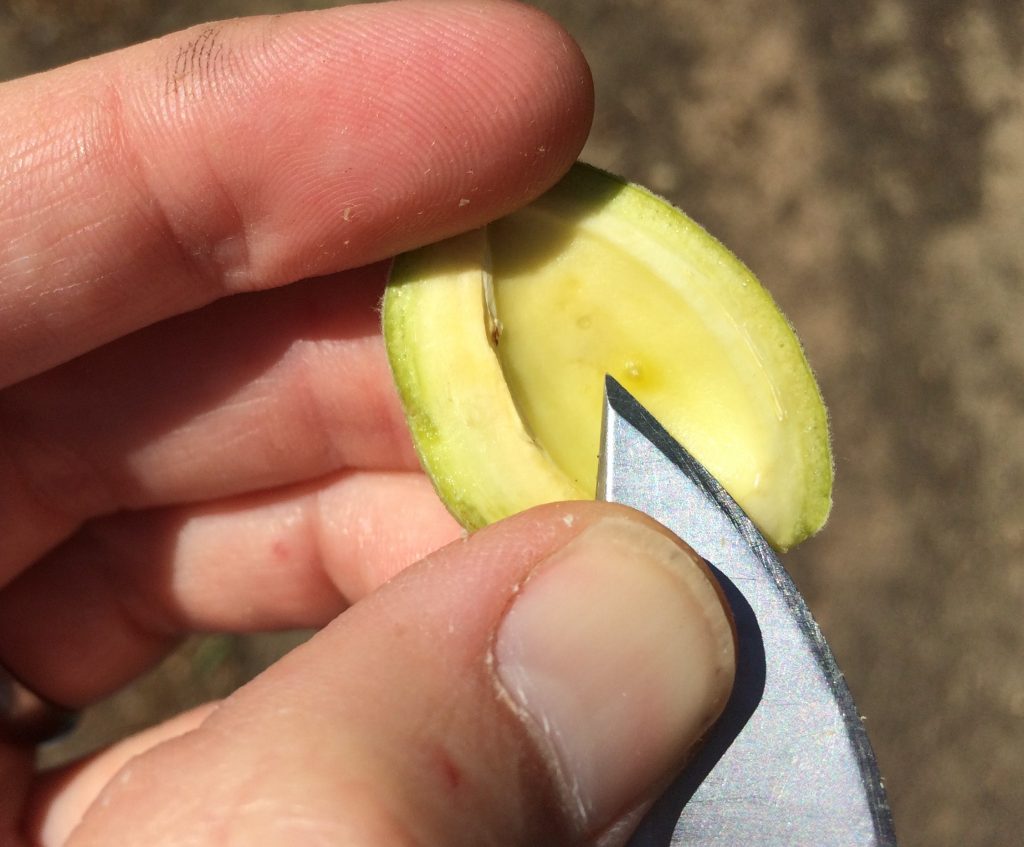An inquiry was received regarding almond gumming. The farmer observed clear gum exuding from multiple nuts in the fields. The concern was regarding the potential of a severe leaffooted plant bug infestation, and if an insecticide should be applied to reduce the damage.

Generally, there are two types of damage that cause hull gumming: internal and external tissue damage. Internally, damage to the vascular tissues that surround the developing nut can cause gumming. This type of damage is often due to an enlarging nut that puts pressure on the hardened shell, leading to a disruption of the vascular bundles between the shell and the hull. Once the damage occurs, the exuded gum exits through the weakest point of the nut, which is often in line with the suture. This commonly occurs with varieties that have large kernels or in years with cooler than normal temperatures which provide conditions for larger kernel growth. It is not an issue as it does not affect harvest or kernel quality.

External damage that causes gumming is more concerning. This damage can be caused by physical damage or by insects. Within orchard settings, knowing the weather history or location of the damage can lead to the diagnosis of the cause from abiotic issues (e.g. hail, equipment, etc). Damage from biotic causes is typically more random as it is usually caused by Hemiptera insects (e.g.true bugs), which include stink bugs and leaf-footed plant bugs. These types of insects have mouth parts that can pierce the hull and cause nut damage and loss. If the feeding is early enough in the season it can kill nuts, if after shell-hardening, feeding can still damage or discolor the kernel.

The distinguishing characteristics to determine the difference is the location of the gumming. If occurring after shell hardening and in-line with the suture, it most likely is a physiological issue. If the gumming is coming from other areas on the nut or from multiple locations, there is a good chance it is insect related.

If there is a question on the cause, a quick dissection of the nut will provide further clues. Insect feeding tends to leave small holes in the hull and the damaged area can appear “water-soaked.” These tiny pinholes may extend to or through the shell. In contrast, the physiological issue does not have an obvious hole in the hull and tends to have a water soaked area in close proximity to the shell/hull interface.
If the problem has been diagnosed to be insect related, a insecticide spray may be needed. Scout the area for further damage and signs of the insects. Once the insect is identified, utilize a product that will target the pest (More information here). Unfortunately, most of the products that work on the true bugs are broad spectrum, which will have secondary impacts on the orchard ecology.


Faruk Ghumra
June 29, 2020Hello David
Thanks. As always, your experience is coming through. Thank you for summarizing this, and as you have shown, gumming can be due to many different causes.
Is the fungicide Spear-Lep available in Europe – if so the distributors?
David Doll
June 30, 2020Faruk,
Thanks for the comments. The insecticide Spear-Lep isnt available yet in Europe. They have informed me that they are working to get the product registered within the EU.
David
Chris Rishwain
July 6, 2020Very timely article. Thanks for the information.
David Doll
July 6, 2020Thanks Chris.
Hope your season is progressing as you hoped.
David
MAXWELL V NORTON
July 11, 2020Helpful pictures and good article.
David Doll
July 19, 2020Thanks Maxwell. Hope you, Diane and the family are doing great and staying safe. I hope we can catch up on my next trip home – whenever that will be.
Michael Smith
May 5, 2022Thank you David for the great presentation. I was scouting my field yesterday while spraying. I found one nut with some gumming. Wasn’t quite sure I cut it open and found no presence of a pest. We’re seeing more LFPB in the Fresno Ca. Area
Davidd
May 9, 2022I am glad to hear the article helped. LFPB will always be a challenge!
David